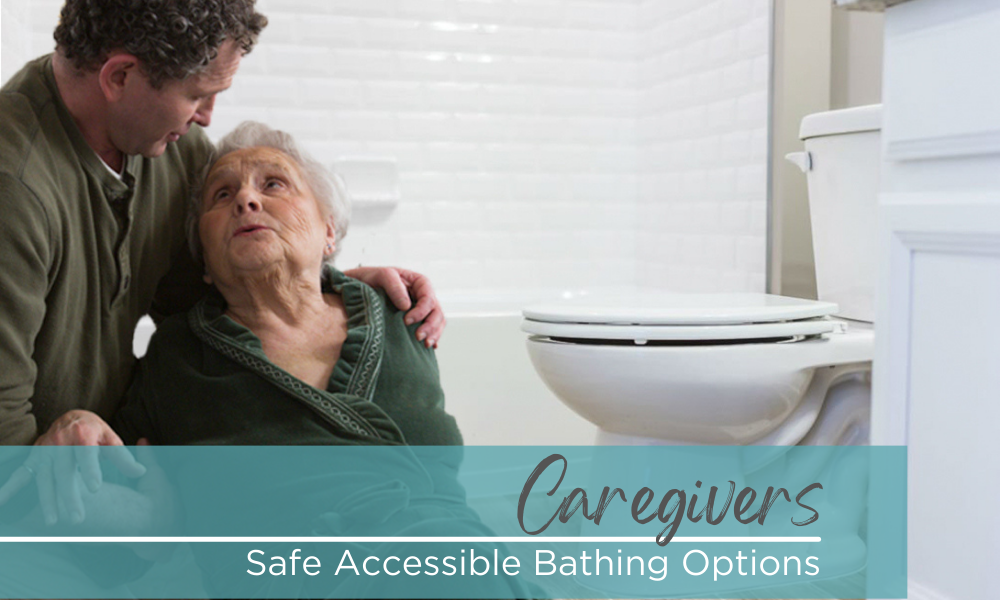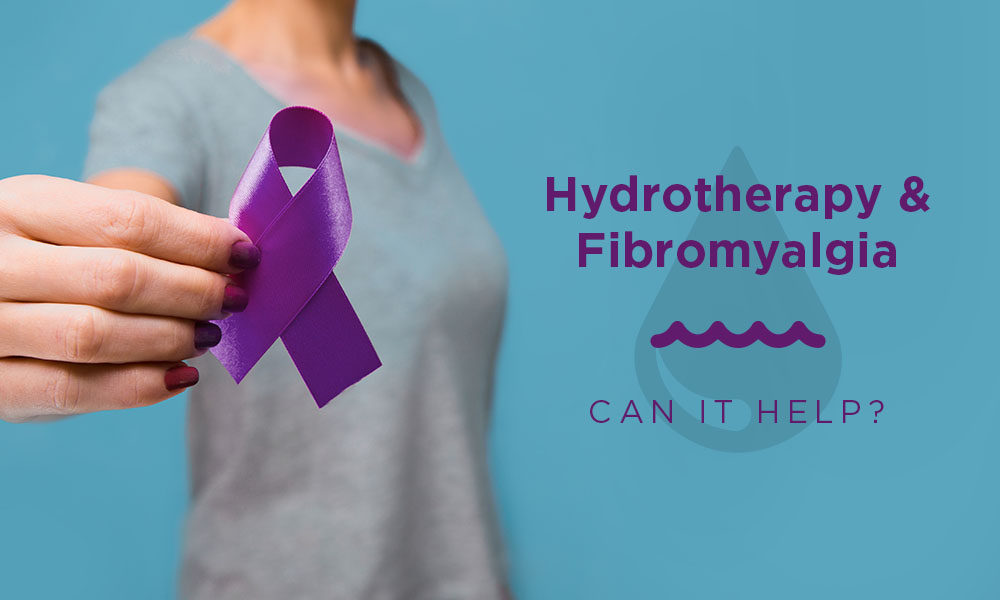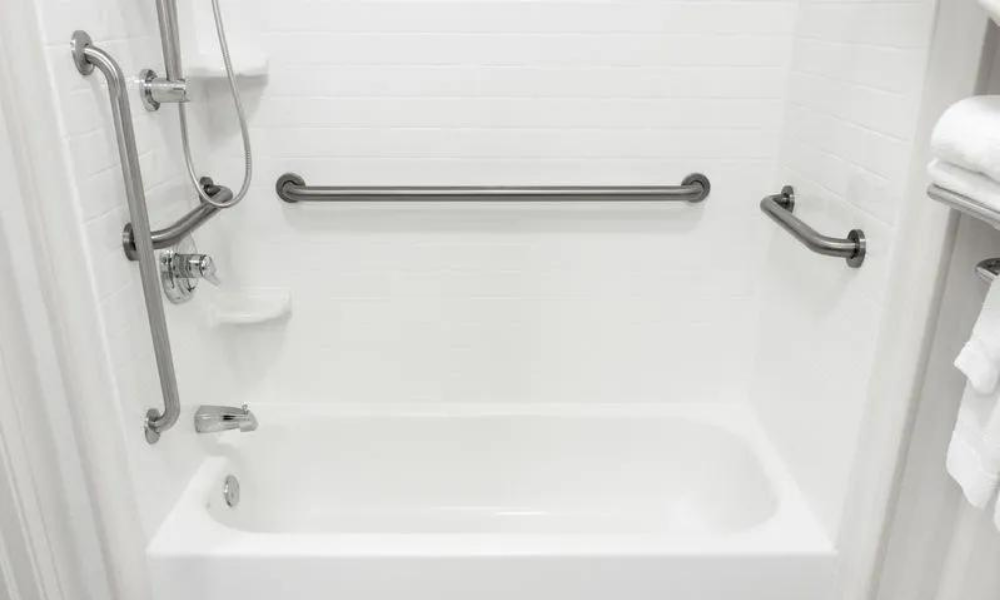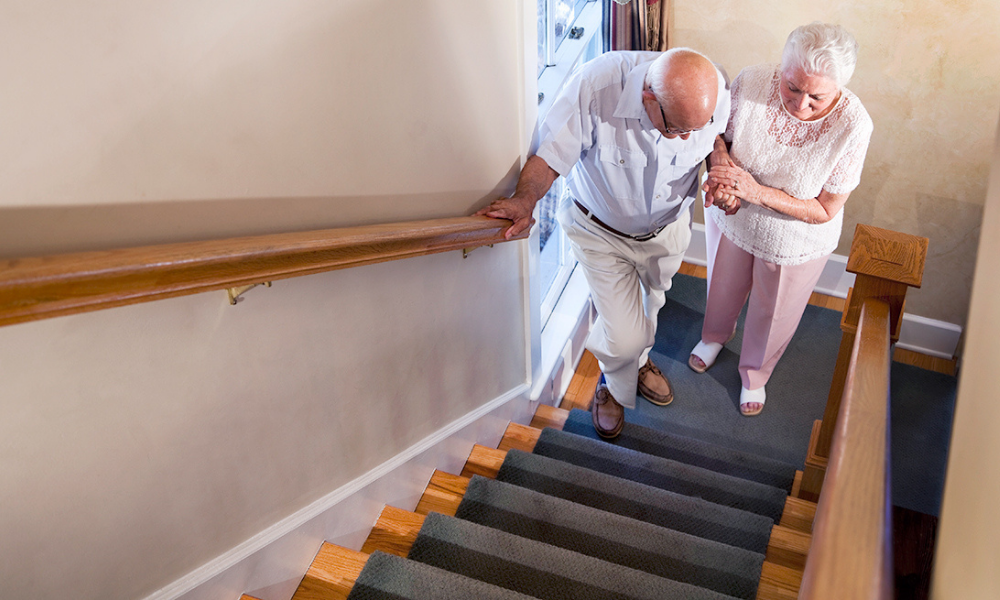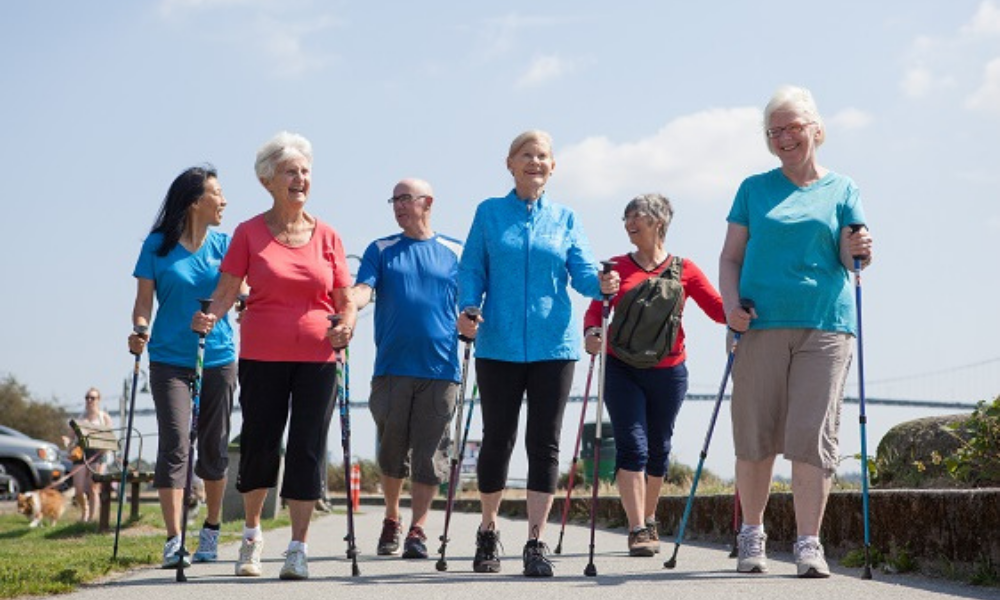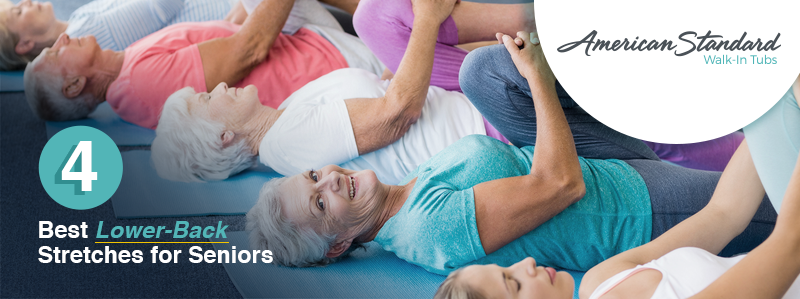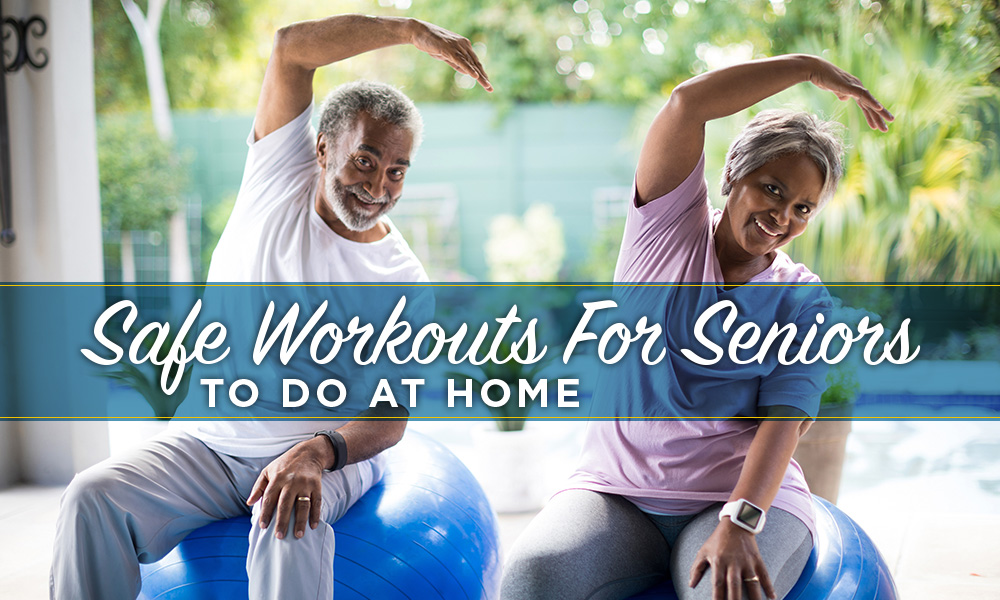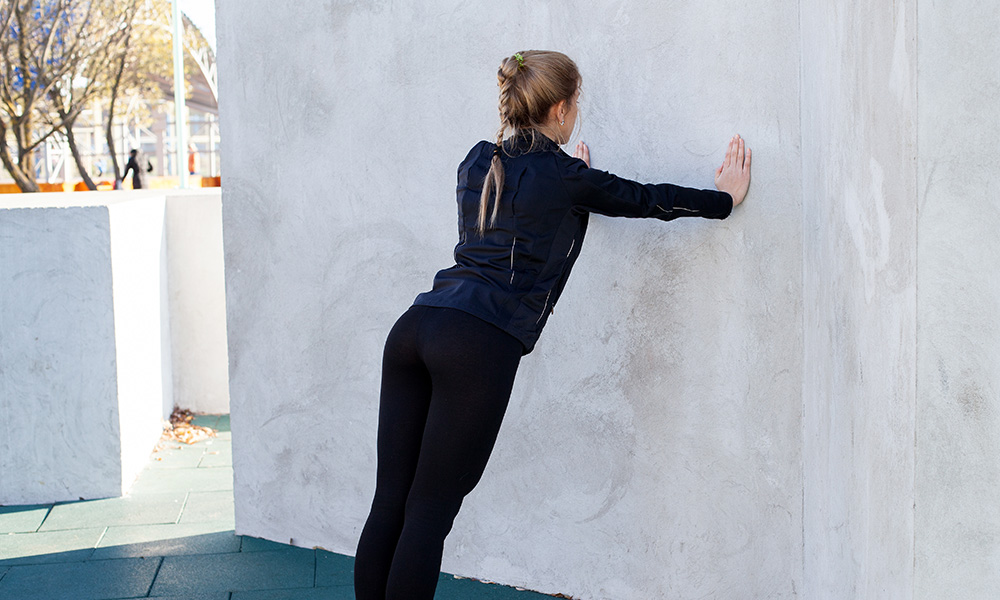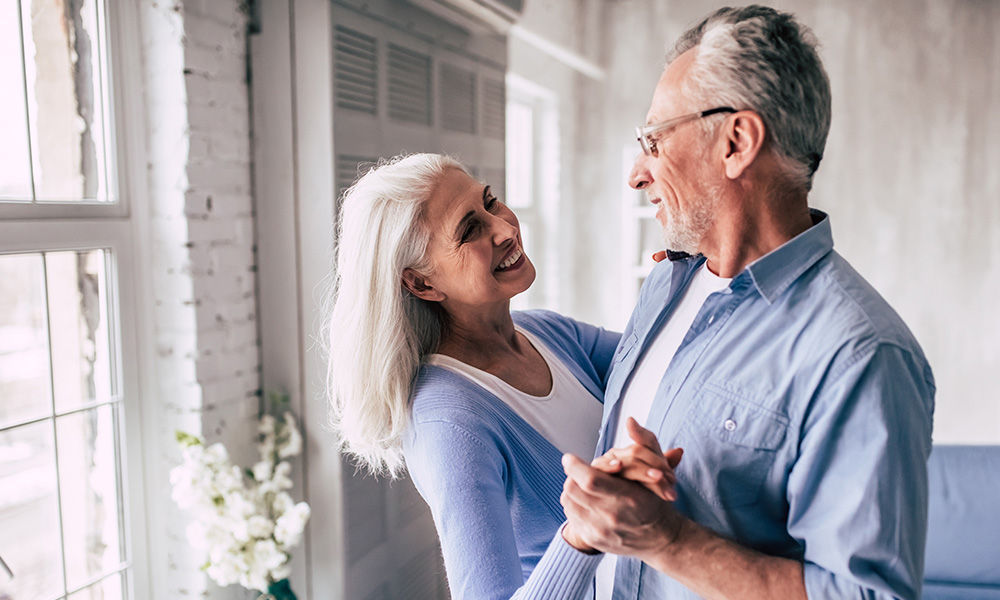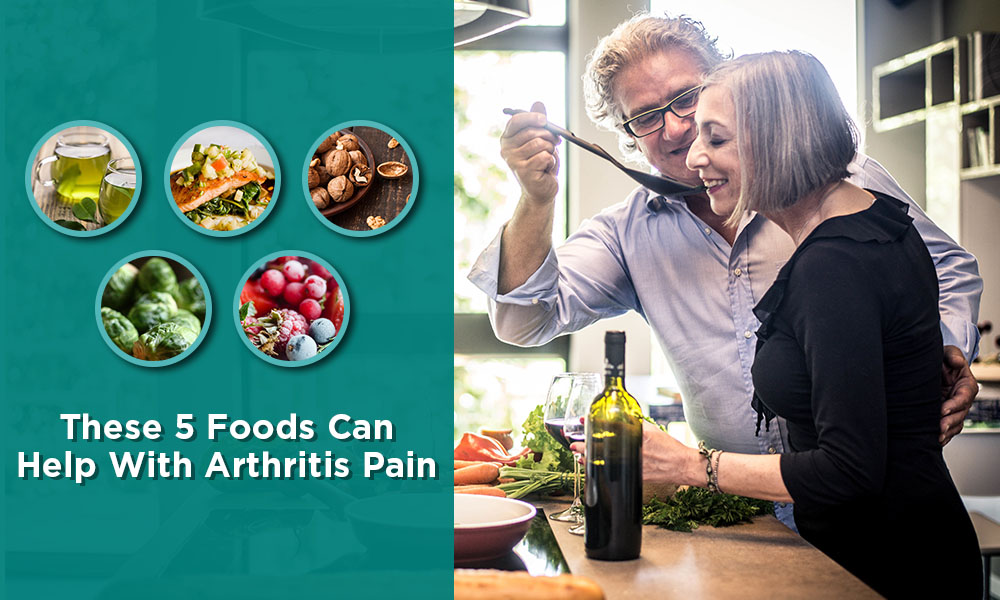With the strategy of reducing the incidence of falls, and enabling individuals to remain independent in their home or place of residence; American Standard Walk-in Tubs Canada works with families, caregivers, and health professionals in providing suitable safe, accessible bathing solutions to you. Continue reading “Caregivers: Are you looking for Safe, Accessible Bathing Solutions?”
Category: American Standard
Hydrotherapy and Fibromyalgia: Can it Help?
May 12, 2022
If you have aches and pains throughout your body and nothing has been helpful in relieving the pain, it might be beneficial to turn toward hydrotherapy. Whether you’re experiencing fibromyalgia syndrome (FMS) or another form of body pain, low-impact exercise might be helpful.
Learn more about the history and definition of hydrotherapy, understand exactly what fibromyalgia is, and get to know the connection between an ancient bath and common body aches.
What is Hydrotherapy?
Hydrotherapy is a form of therapy using hot and cold water massage to relieve external and internal body pain. A hydrotherapy pain relief massage uses different temperatures and pressures of water to help sooth specific symptoms such sore muscles, joint stiffness, common colds, headaches, and much more. Even though hydrotherapy can be practiced in many different forms, hydrotherapy benefits are often delivered through underwater jet massages, such as those found in hot tubs and walk-in tubs.
Experts date hydrotherapy benefits back to the times of Ancient Greece when Hippocrates began using this unique treatment as a form of relaxation to rid the body of the common aches and pains. In addition to Ancient Greece, hydrotherapy can also be traced back to Ancient Chinese, Roman, and Egyptian times. Over time, hydrotherapy began to grow in popularity and was used for its therapeutic benefits, rather than just to aid in relaxation. Finally, hydrotherapy made its way to North America in the 1840s. Today, hydrotherapy comes in many forms and has many health benefits.
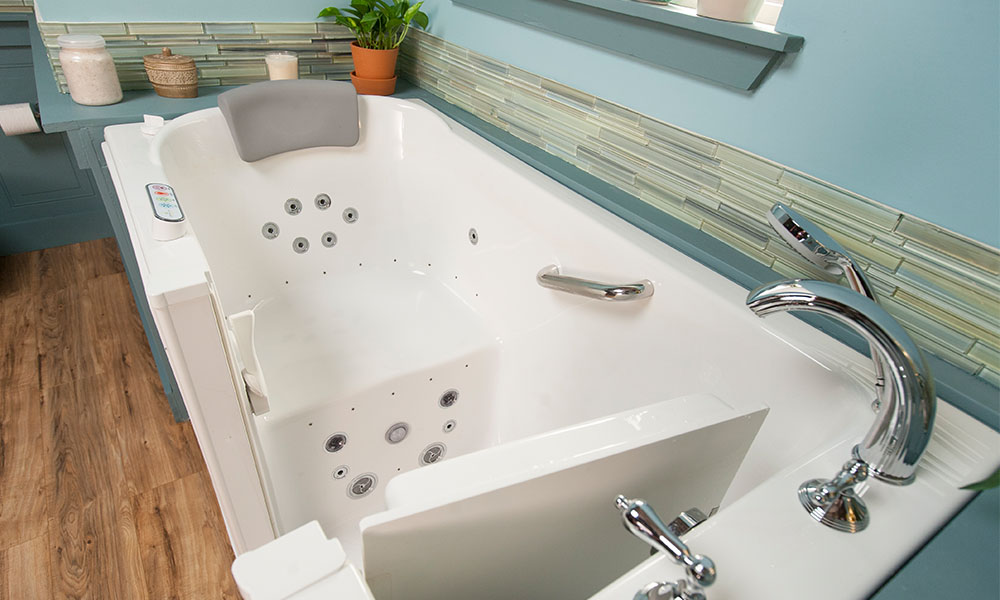
In the early nineteenth century, a prophet known as Sebastian Kneipp created what is now known as the Kneipp therapy. Kneipp’s hydrotherapy philosophy involves water, herbs, exercise, nutrition, and healthy lifestyle habits. Not only is the therapy used to maintain general health, but it’s also used as a rehabilitation to help the body get back to par after an illness or injury. Sebastian Kneipp was just the beginning of the hydrotherapy phenomenon.
What is Fibromyalgia?
According to WebMD, fibromyalgia syndrome (FMS) is the second most common condition affecting your bones and muscles, however it is often misdiagnosed and misunderstood. Symptoms include widespread muscle pain, joint pain, and fatigue with no known cure. In addition, individuals may experience tenderness of trigger points which can lead to a constant dull ache throughout the body.
Some other fibromyalgia symptoms can include:
- body fatigue
- restlessness or problems sleeping
- headaches
- depression and/or anxiety
- trouble focusing
- pain in the lower abdomen
Since there is no known cure for fibromyalgia, hydrotherapy has been used as a treatment to help relieve pain.
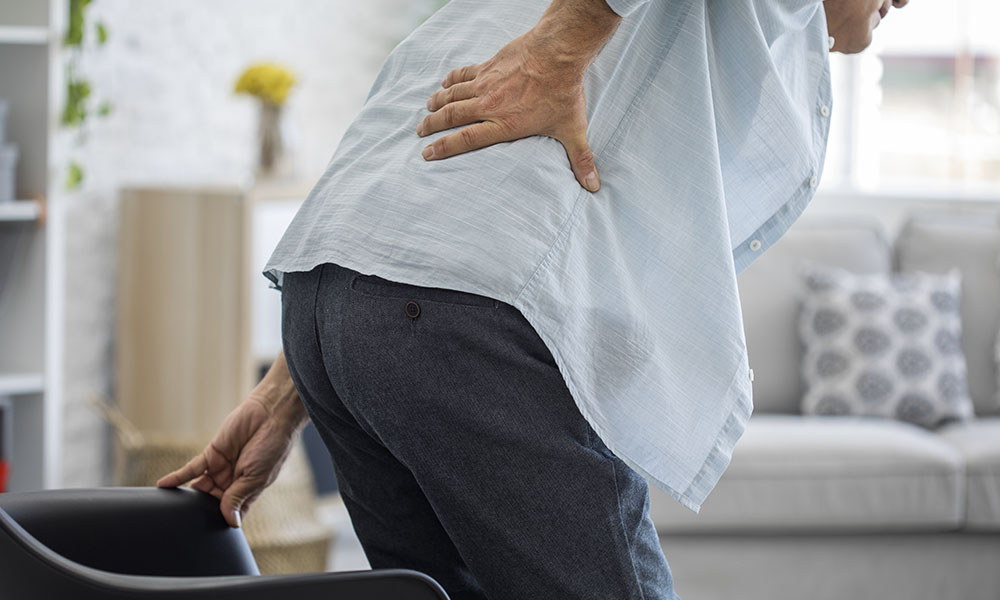
The Connection Between Hydrotherapy and Fibromyalgia
The health benefits of water should never be underestimated. Hydrotherapy benefits help reduce, soothe, and relieve the body of tough aches, making it a logical next step to help patients experiencing fibromyalgia. Not all treatments will be the same, but some FMS patients have experienced relief.
According to a review conducted in 2008 by Rheumatology International, the study outcome concluded that “there is strong evidence to support the use of hydrotherapy in the management of fibromyalgia (FMS).” The majority of patients in the study were women who were qualified as having FMS and at the end of the study the majority of the subjected experienced an overall improvement in pain management, sleep quality, body aches, and overall life.
In addition, hydrotherapy serves as a complement to regular exercise, which can be beneficial for those suffering from FMS. Exercise on its own may work for many patients, but a relaxing bath will aid in muscle recovery and the many health benefits of exercise.
According to a report written in the Australian Journal of Physiotherapy, women with fibromyalgia were recruited for a randomized control trial study to determine whether a hydrotherapy exercise program produced improvements in pain associated with fibromyalgia. They found that participants after a 12-week hydrotherapy training program, knee strength, quality of life, and pain reduction improved significantly more than in the control group.
If you are experiencing fibromyalgia syndrome (FMS), you should speak to your doctor about hydrotherapy and the benefits that it may provide. Learn more about what our features and products can do for you and get your very own hydrotherapy tub today.
To get a free estimate on an American Standard Walk-In Tub click here.
Seniors: Staying Safe at Home
According to Canadian Institute for Health Information (CIHI), data shown on Injury and Trauma Quick Stats, stated that in 2020, half of all injury-related hospitalizations were by Canadian seniors, who fell at home. Preventable falls are the #1 reason for injury-related deaths, hospitalizations and emergency room visits by older adults, and as our population ages, this number is expected to increase. Falls can lead to devastating injury and the lasting effects of chronic pain and reduced Quality of Life. Parachute Canada is a national charity for injury prevention, and the best way to prevent falls, is to prepare for them. Focussing on lifestyle key strategies and increasing awareness, you can prepare your environment to be less hazardous, and more of a safe haven. Below are some tips and tools that can help keep you safe in your home.
Senior Home Safety in the Bathroom
According to the Center for Disease Control and Prevention , about 235,000 people over the age of 15 ended up in the emergency room because of a bathroom injury. To help prevent being one of those numbers, here are some tips to help make your bathroom safer:
- Add some traction to the bathroom floor and tub with slip-resistant mats, which can help minimize slips and falls.
- Instead of using the flimsy towel bar, install grab bars. Grab bars are more stable, can handle a person’s body weight, and can be strategically placed in the room to provide stability when needed.
- Invest in a walk in-tub, which help people with mobility issues enjoy a relaxing bath without having to step over a slippery edge. You can sit safely while you bathe which reduces the risk of slipping.
Stair Safety
Stairways are the second most common area for falls besides the bathroom. The following are essential to ensure your safety at or near the stairs:
- Handrails: ensure handrail is securely attached at, above and below the stairs to landings.
- Lighting: ensure stairs and hallways are well lit, and switches are easy to reach.
- Clutter-free: remove all items from stairs and landings, even if they are just placed temporarily
Senior Home Safety in the Bedroom
We spend at least eight hours of our day in the bedroom, and it should be a place that provides safety and security, especially for those with mobility issues. Here are some safety tips to incorporate in the bedroom:
- Reduce clutter: Over time we accumulate stuff, and it may be hard to purge it or find new homes for some items. However, this is a necessary step for increased home safety. Removing the clutter can help because it eliminates potential obstacles in walkways, frees up space, and can keep you organized. Tuck shoes and slippers out of the walking area.
- Nightstand: Keep your bedside table or nightstand neat and clean, and use only for essential items
- Assistive Devices: Keep within reach or use a SuperPole to help you in and out of bed and/or the areas you need support.
- Telephone: Keep a cordless telephone or emergency button within reach of your bedside table.
- Furniture Placement: Create a clear path from your door to bed to bathroom, and chairs out of the way.
- Nightlights: Try installing (sensor) night lights throughout your home, as they can provide enough light to guide your path.
- Eliminate Cord Clutter: Electrical cords can be a tripping hazard if they’re not organized. To stay safe, invest in a power strip to space out the cables.
- Smoke & C0 Detectors: Have smoke/C0 alarms installed outside each sleeping area. Have someone check and replace the batteries in all detectors Smoke alarms must be replaced every 10 years
Senior Home Safety in the Kitchen
The kitchen is the heart of the home and a place to eat as a family, but did you know it’s one of the more dangerous rooms in the house? The National Fire Protection Association stated that 3 in 10 home fires start in the kitchen, but that’s not the only safety issue. Check out these safety tips to help make your kitchen safer:
- To prevent fires, practise Fire Safety & Prevention: stay in the kitchen when you are cooking. Turn burners off if you have to leave the room, and after you’ve completed your cooking or baking. Make sure to turn off appliances that aren’t being used or invest in ones that have automatic shut off features such as toasters, coffee makers, rice cookers, and tea kettles.
- Be organized: clear countertops for only regularly used essentials within reach, and clean dishware regularly.
- Clean up cluttered messes to avoid the risk of slipping.
- Make sure that heavier objects are at knee to waist level and use lightweight dishes and glassware.
- All rugs are tripping hazards: eliminate kitchen rugs or ensure that it is rubber-backed so that it doesn’t move.
- Do you have a pet? Put water & food bowls out of the way to avoid tripping and slipping on spilled water.
- Make sure the kitchen is well-lit with both daytime and nighttime lighting.
- Have smoke alarms installed on every level of your home outside each sleeping area. Have someone check and replace the batteries in all smoke detectors Smoke alarms must be replaced every 10 years.
Strategies for Avoiding Falls Altogether
By taking care of your health and wellness, you can avoid illness.
Focus on the following strategies, and by seeking assistance with some light to moderate exercise programs, to can age longer and stronger.
- Get Active
- Physical activities that challenge balance
- Muscle strengthening at least 2x per week
- and moderate to vigorous aerobic physical activities of at least 150 minutes per week
- Get Your Sleep (7 to 8 hours of quality sleep)
- Go Slow -but limit being sedentary
- Eat Right
- Stay Hydrated
- Safeguard Your Home & Bathroom
- Get Your Sight & Hearing Checked Regularly
- Review Your Medication with your Physician
- Wear Sturdy Shoes
- Use Mobility Devices for Safety
Active Aging Canada has some tips for keeping you active and on your feet.
Staying active is something we should be doing daily, and staying safe from weather outside is also important. Remember to hydrate first, wear sunblock and a hat.
These are just a few tips to help you help you stay safe in your home. They are important considerations for both older adults and caregivers. For more ideas, check out projects that can help seniors live independently.
You don’t have to be an older adult to observe safe practices and prevent falling.
Safety is for everyone!
For more information on Bathroom Safety:
American Standard Walk-in Tubs Canada 1-844-867-7737
Four of the Best Lower-Back Stretches for Seniors
As you get older, taking care of your body is even more important. Stretching is a great way to alleviate tension and pain in your lower back, strengthen your core and back muscles, and maintain your agility. Let’s look at some of the best lower-back stretches for seniors to include in a daily routine. As always, check with your doctor before starting a new exercise routine, and stop a stretch if you ever feel uncomfortable.
Child’s Pose
Level: Easy
Child’s pose is a classic yoga pose that helps release tension in your lower back, and it also stretches your shoulders and upper back. To get into child’s pose:
- Grab a yoga mat and get on all fours.
- Sit your hips back, leaving your arms outstretched in front of you.
- Get as close as you can to having your rear touch your feet. Your back should round and you should feel the muscles in your lower back release.
Watch how to do child’s pose here.
Modifications for Child’s Pose:
If getting into the full child’s pose is difficult for you, try the following modifications:
- If you can’t get your hips to touch your heels, either because of injury or mobility issues, instead stretch your arms forward. You can also widen your knees (a little wider than hip distance), make sure your heels are still together, and send your hips back this way. This will help you get your hips a little further down.
- If you find your neck straining in child’s pose, try putting a yoga block down and rest your head on it. That way, your head will be elevated and you won’t be forced to push it into the ground.
- Lastly, if you don’t want to stretch your arms forward due to shoulder issues, you can always bend your arms parallel to your shoulders and rest your head on your hands.
Back Twist in a Chair
Level: Medium
Gently twisting from one side to the other helps stretch your back and core. This stretch is best done while sitting up straight in a hard-backed chair. Simply:
- Sit up straight in your chair.
- Put both arms straight over your head, then take them both down to your left side. You can grab the back of the chair for a deeper stretch, or just twist as far as is comfortable.
- Repeat on the other side by putting your arms straight up and bringing them down on your right side.
- When twisting, look to the side that your arms are on. This will help stretch your neck, as well.
Watch how to do a back twist in a chair here.
Modifications for Back Twists:
If you can’t twist your body very far, that’s okay! An easy modification is to just twist as far as you are comfortable. Some people may be able to twist so far that they can look behind them, and some may only be able to twist as far as putting their hand on their hip. No matter where you are, only twist as far as you feel comfortable. Spine twists are very beneficial when done correctly, but care should be taken on this sensitive area.
Cat-Cow Yoga Pose
Level: Medium
Cat and cow are complementary yoga poses that arch your back and then let it drop. Here is how to do cat-cow pose on the floor:
- Grab a yoga mat and get on all fours.
- Gently arch your back away from you, drawing in your core and pressing your spine to the sky. This is cat pose.
- Then, drop your spine and arch your back into a reverse C shape, and look up to the ceiling. Push your hips up to really feel the stretch and increase the curvature of your spine. This is cow pose.
- Alternate between the two to get the full range of movement. Cat pose pushes your spine to the ceiling, while cow pose arches your back and releases lower-back muscle tension.
Watch how to do cat-cow here.
Modifications for Cat-Cow:
For a simple modification, try doing the cat-cow pose in a chair rather than on the floor. This modification is great if you have shoulder issues. To do this move in a chair, simply rest your hands on the bottom of the chair, and look up to the ceiling and arch your back (cat), then look down at the floor and curve your back (cow).
Lying Knee Twist
Level: Hard
This stretch is similar to the back twist, but it is done on the floor and uses the weight of your legs to deepen the stretch. How to do a lying knee twist:
- Lay flat on the ground facing up with your arms spread to the side in a T shape.
- Bend your right knee and let it gently fall to your left side. Keep your left leg straight.
- Repeat by bending your left knee and letting it gently fall to your right side. Keep your right leg straight.
Watch how to do a lying knee twist here. To deepen the stretch, you can also bend both legs at the same time and move from from side to side, like shown in this video.
Modifications for Knee Twist:
We rated the lying knee twist as a hard level because it twists your back with the whole weight of your legs. While not a direct modification, a similar stretch is the Beauty Queen. Simply sit on the ground, bend one leg and cross it over the other, and look in the opposite direction. This stretch is easy to modify for your own flexibility and mobility because you can adjust your leg (drawing it closer in is harder) and twist only as far as you need. This is still a more advanced stretch, but it’s a good alternative if you don’t want to do the lying knee twist on the ground.
Take Your Stretching Further
Once you feel comfortable with your lower-back stretches, you can take them up a notch by stretching in the bath. Warm baths have been loved for their therapeutic properties for centuries because of the water’s buoyancy and relaxing properties. Usually the cause of lower back pain is muscle-based (unless you have a specific injury or ailment), and warm water relaxes your muscles so you can deepen your stretches. Try some gentle stretching, such as the back twist described above, in your walk-in tub for a full-body release. Your lower back will thank you!
Safe Workouts for Seniors
We all have New Year’s Resolutions and if one of yours is to incorporate more exercise into your routine, these workouts for seniors can help! There’s no reason to make excuses because in as little as 15 minutes, you can get moving and enjoy the many benefits of exercise.
Let’s look at some safe, effective 15-minute workouts for seniors!
A Walk Outside (or on the Treadmill)
The easiest (and most affordable) way to get moving is just to take a walk outside. Or, if the weather doesn’t permit this winter, take a walk on the treadmill. This exercise should be no more than 60-75% of your maximum heart rate (which is 220 minus your age). Aim for this fat burning zone to both burn calories and increase your cardiovascular strength. For example, if your target heart rate is 165 bpm, a brisk walk should do the trick. If you’re inside, try turning up the incline to imitate walking up hill. This will help raise your heart rate and stimulate more muscles in the legs and glutes.
Wall Push Ups
Regular push ups might be hard for some people, but wall push ups are the perfect upper body workout for seniors because they are low impact for sensitive joints, safe, and effective. Simply stand in front of a sturdy wall about two feet away. Place your hands on the wall at shoulder height. Keep your body straight and bend your elbows so your body leans in toward the wall. Stop with your face as close to the wall as you can get, then push yourself back up. Watch a video demonstration of wall push ups here.
For your full 15-minute workout, try doing 50 seconds of the exercise with 10 seconds rest. You can combine wall push ups with other upper body work, like bicep curls with household items.
Chair Squats
Squats are a great way to work the hamstrings and glutes, but bending down to the ground to do a full squat might be out of the question. But, that doesn’t mean you have to give up this beneficial exercise. In fact, squats are one of the best workouts for seniors because they help improve functional movement that you use every day.
For chair squats, simply set up a sturdy chair and stand about a foot in front of it. Keeping your back straight and your chest upright, sit back into the chair. Instead of putting all your weight down, try to just touch the chair with your glutes and then stand back up. This continuous tension will help your muscles grow! If you want to step it up a notch, try adding some dumbbells for extra weight. Just make sure to stretch it out before and after your workout to avoid injury.
Dance
There are countless dance classes at the gym, but you can have a dance party right in your own living room and get a great workout! If you’re serious about getting your dance on, there are plenty of online resources to learn how to dance. Or, simply put on your favorite playlist and get moving! Don’t worry about looking a little silly, we all need a laugh or two here and there.
Back Leg Raises
While you have your chair out from your chair squats, let’s add another lower body workout for seniors. Back leg raises are a great move to work the hamstrings and glutes and a similar movement is used in a lot of barre, yoga, and ballet classes.
Stand behind a chair and slowly lift one leg straight back without bending your knees or pointing your toes. Instead, flex your foot downward. Hold that pose for one to five seconds, depending on your strength level. Repeat this ten to fifteen times per leg. If you want to try mixing it up, pulse five times while your leg is at its highest point to maintain tension in the muscle. More variations can be found in this barre-inspired video. You’ll have a better shaped behind in no time!
Age is just a number when it comes to moving your body. This year, ditch the excuses and try these workouts for seniors right in your own home. Build a complete workout routine to start 2022 off right.
To help you relax after your exercising program, rejuvenate your body and relax your mind in a hot bath. A ComfortSeries bathtub can help your body recover.
Want to learn more about the best walk-in tub in Canada? Click the button below to get a free estimate!
*Health experts suggest that you talk to your doctor before you start an exercise program.
Foods for Arthritis Pain
Updated October 12, 2021
Did you know that your diet plays a major role in your arthritis pain management? While physical therapy can do wonders, eating right can also help. Let’s look at five anti-inflammatory foods that can help with arthritis pain.
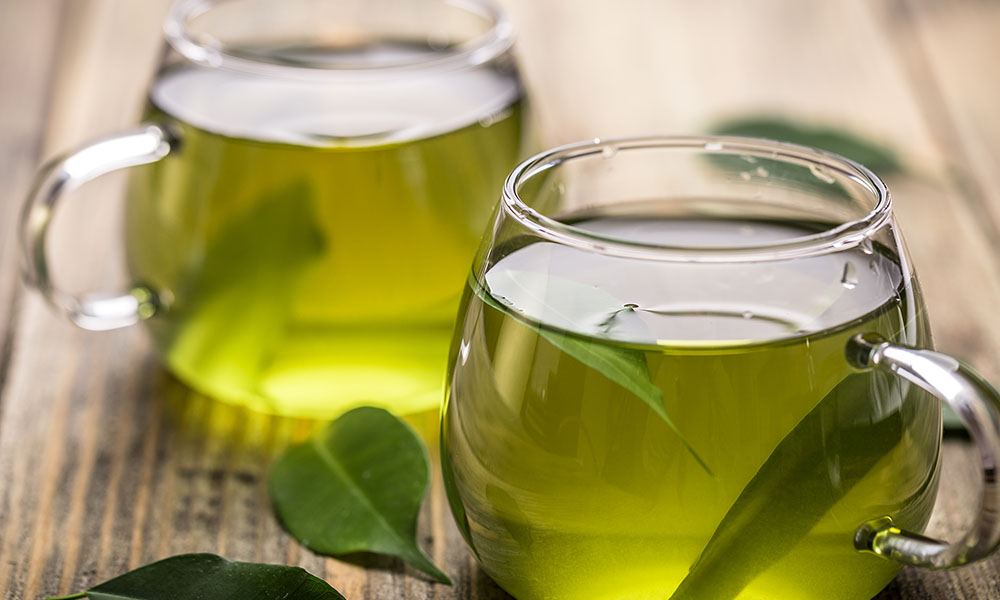
-
Green Tea
Green tea has many health benefits, one of which is its anti-inflammatory properties. Green tea contains epigallocatechin-3-gallate (EGCG), a natural antioxidant that works to stop the production of certain inflammatory chemicals in our bodies. Research also suggests that EGCG may prevent or slow down the break down of our body’s cartilage, which can help preserve joints longer. So grab a nice, warm cup of tea, pour yourself a bath, and enjoy this healthy and refreshing drink.
-
Fatty Fish
Fatty fish, such as salmon, herring, mackerel, sardines, anchovies, rainbow trout, and oysters, contain omega-3 fish oils, a natural compound that can help decrease inflammation by suppressing the enzymes that erode cartilage. Not only do omega-3 oils reduce the symptoms of arthritis, but they also aid in more strength, less fatigue, reduced joint swelling and stiffness, and less overall pain.
Bonus tip: when cooking your fatty fish, use seasonings like garlic, turmeric, and ginger for even more benefits. Garlic is a member of the allium family, which means it contains a compound that also limits cartilage-damaging enzymes. Turmeric is actually one of the most researched inflammation fighters, as it contains curcumin which is beneficial in managing chronic inflammation. Lastly, ginger blocks the production of inflammatory substances in the body.
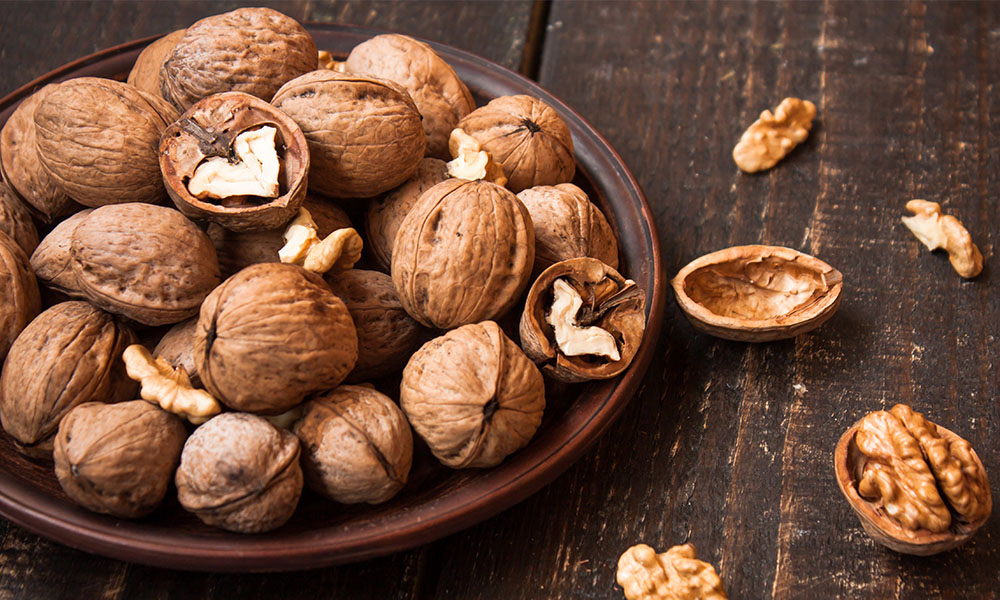
-
Walnuts
Like fatty fish, walnuts are full of healthy nutrients and loaded with anti-inflammatory compounds. Omega-3 has been shown to decrease symptoms of arthritis and reduce inflammation. In addition to omega-3, walnuts also contain healthy fats and oleocanthal, which also helps decrease inflammation. In fact, these healthy fats block the same inflammatory pathways as ibuprofen and aspirin!
-
Greens
It’s no surprise that leafy greens are great for our health, but favorites like broccoli, spinach, brussel sprouts, and cabbage are especially beneficial for individuals with arthritis. These vegetables have carotenoids, which have long been touted for their protective properties. Usually, carotenoids are responsible for the bright yellow, red, and orange we find in nutritious picks like bell peppers and carrots, but these greens have carotenoids as well. Carotenoids act as antioxidants in our bodies, are major cancer-fighters, and have anti-inflammatory and immune system benefits. So fill your plate up with a colorful diet of fruits and vegetables to help alleviate some of your arthritis pain.

-
Berries
Berries such as blackberries, elderberries, raspberries, and strawberries contain anthocyanins, powerful antioxidants that help reduce inflammation and help our bodies generate connective tissue. In fact, anthocyanins are even more powerful than Vitamin C in defusing free radicals in our bodies, which can irritate tissue and cartilage.
These five foods will help relieve joint pain, but eating a healthy diet all the time will also help. Whole grains, lean proteins, and lots of fruits and veggies are naturally anti-inflammatory and will help you maintain a healthy weight. Every pound of weight you lose, you reduce the load on your joints by four pounds. Maintaining a healthy weight and diet will help you control your joint and arthritis pain. If you want to learn more about preventing arthritis and healthy tips and tricks, visit the Arthritis Society or the Arthritis Foundation.
ComfortSeries™ Bathtubs by American Standard can also help soothe Arthritis Pain.
In fact, our walk-in tubs have been tested and commended by the Arthritis Foundation for Ease of Use. Our walk-in tubs were awarded this commendation because they are products that are proven* to make life easier for people with Arthritis and limited mobility.
*This award recognizes products that make life easier for people with arthritis and other physical limitations. Products undergo a multi-step testing process conducted by an independent lab of experts in the field of universal product design and evaluation.
